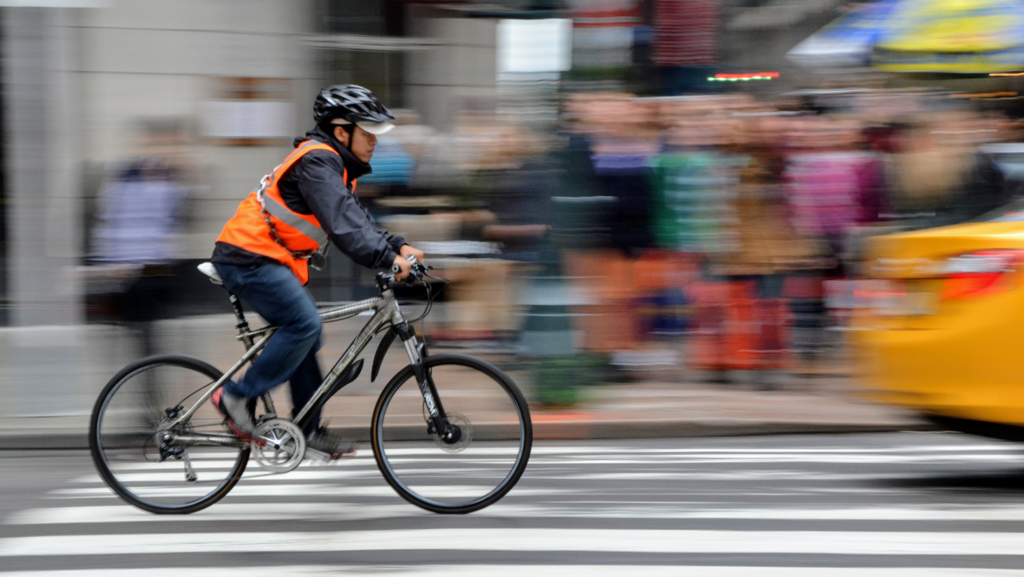Smart and sustainable hub solutions
The work package will develop knowledge with the aim of demonstrating a concept for the next phase of the project. In the HITS project, this work package focuses on being able to deliver goods during off-peak times with smaller electric vehicles and bicycles. For example, goods can be delivered with electric vehicles during the night for minimal disruption to traffic.

We have identified at least three promising areas of development for the hubs of the future:
- Distribution centre
- Smart city hub
- Mobile hub (with no permanent premises)
Open innovation is important because the partners involved will not always have the opportunity to resolve the problems that we think are likely to occur.
The aim of this work package is:
- To investigate the requirements for and the design of a concept for smart, sustainable city hubs that are created to meet customers' needs and expectations, enable effective operation 24/7 and allow for the efficient use of resources as a result of load sharing.
- To understand how new technology and automation can simplify off-peak transport, return flows, shared loads and transshipment for the last mile using vehicles designed for the purpose, such as small electric vehicles and bicycles.
- To simplify the development of new services for hubs by building knowledge and introducing innovations.
Objective
The creation of at least three concepts for distribution centres and smart city hubs which can be prepared for testing in a real-life environment together with a system of specially designed vehicles, load carriers and automated receipt of deliveries.
Data and experiences will be used to prepare for future innovations in technologies and services which when connected together in an integrated system of systems will contribute to a sustainable and cost-effective transport system.
Contents
- WP 3.1 State-of-the-art study
- WP 3.2 Innovation and design for service development
- WP 3.3 Value capture in the ecosystem of a smart hub
- WP 3.4 Design of a hub concept for effective goods flows
Work package leader:
Scania, Magnus Blinge
Other participants:
Ragn-Sells, Catena, Fabege, Södertörnskommunerna, LogTrade, KTH, Linköping University, Gotheburg University, IVL, FTL, City of Stockholm

Issues in the work package
This is a challenging area as it is already working and many of the amendments will initially seem cumbersome to those involved. But the goal is for transports to take place outside rush hour and preferably at night to provide a smoother transport flow. And with night traffic, the already intensive passenger car traffic is relieved. But at the same time, some new issues/challenges arise.
The first challenge is, of course, how the goods are to be received at night. Both transport and handling must be quiet so as not to disturb the residents. Manned stations are expensive. How do we solve it with unmanned stations? How do you sign that the goods have been delivered and who is responsible if something goes wrong?
The second challenge is that most customers are satisfied with how it works today and have solved the deliveries. How can they change their mind so that the transport itself can become more profitable when it costs more or the service is worse for the recipient? How can we see which method is most profitable overall?
The third challenge is that inside the cities there are no storage spaces where goods can be delivered at night. The goods delivered on the day go straight into the store. If the goods are to be delivered at night, where should they be placed? And should goods delivered to a distribution center outside the city at night not be delivered to the customer until the next night via a central HUB, 24 hours later?
Next step: The work package continues with three tracks:
- The first focuses on deliveries to unmanned stations where there is room to place the goods. Solutions such as digital keys and silent handling equipment are tested.
- The second track collaborates with more APs to see how deliveries can take place in Arenastaden with autonomous vehicles and collaborative computer systems.
- The third is the development of mobile hubs that accompany the flow of goods. This is in its infancy and many questions about solutions, flows, goods, storage must be taken into account. Interviewing those affected will be a first step.
